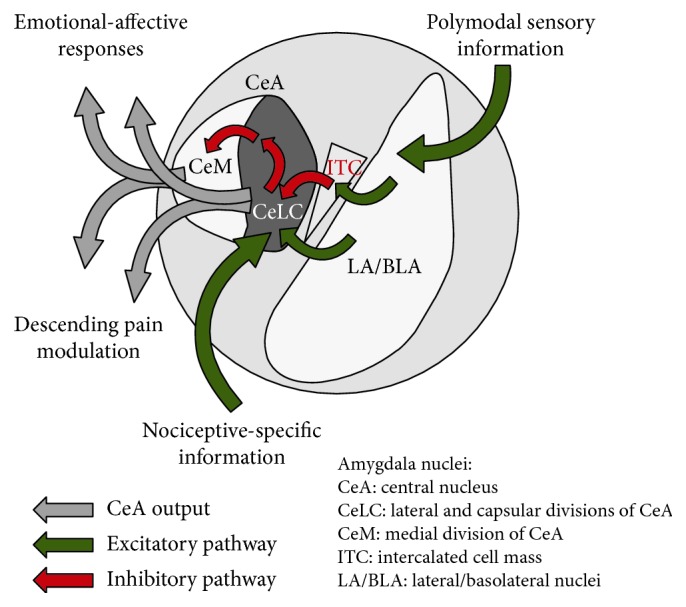Figure 2.

Amygdala pain neurocircuitry. Lateral-basolateral complex (LA/BLA), central nucleus (CeA), and intercalated cell mass (ITC) form the core circuitry involved in amygdala-dependent pain behaviors and pain modulation. The LA/BLA receives polymodal sensory information from cortical and thalamic areas and attaches emotional-affective information, which is then relayed to the CeA. This transmission includes direct excitatory projections to neurons in the lateral and capsular divisions of the CeA (CeLC) as well as feedforward inhibition of CeLC neurons through an LA/BLA projection to the ITC, a group of GABAergic interneurons between LA/BLA and CeA. ITC cells are also the target of cortical control from the mPFC. The CeLC integrates purely nociceptive information received via the spino-parabrachio-amygdaloid tract with highly processed information received from the LA/BLA to generate emotional-affective responses and contribute to top-down pain modulation via projections to the brainstem. This can be done through two types of amygdala outputs: one from CeLC projection neurons and the other from CeM neurons that can be disinhibited by CeLC neurons.
